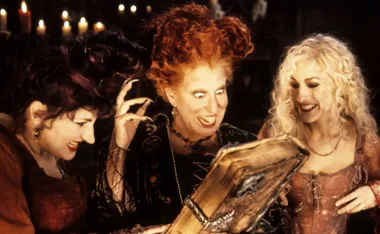His wedding to Kate Middleton was just weeks away, yet Prince William proved he truly was the “People’s Prince” as he took time out of his hectic pre-nuptial schedule to comfort the victims of recent disasters in Australia and New Zealand.
It was a hot, hectic and sometimes heart-wrenching tour. Many of the stories he heard –- about the Queensland and Victoria floods, Cyclone Yasi, the Christchurch earthquake and the Pike Mine disaster — were truly heartbreaking. But William showed that he is his mother’s son: Caring, passionate and hands-on.
I spent five days on tour with the prince and as well as displaying impressive stamina — it was an exhausting schedule — I was struck and impressed by his natural affinity with people. It was impossible not to be reminded of the late Princess Diana, who so effortlessly made everyone she met feel special.
There was no awkwardness and no silences when he met those who were bereaved, and when he met Grantham resident Derelle Linneth, a Downs syndrome sufferer whose farmhouse was destroyed, William hugged her straight back. He had a word of comfort for everyone and brought a smile to many with little to be happy about.
In Cardwell, where many families lost their homes and some lost loved ones, William carried out a marathon walkabout after making a dramatic entrance in a Black Hawk helicopter.
Despite soaring temperatures of 35 degrees, the prince, who was sweating profusely, didn’t flag. In fact, he was positively upbeat, joking that he needed some Australian sunshine to tan his “pasty” skin. He didn’t want a sun hat, he insisted, although he joked with one local that he could use a cold beer!
As he worked the crowds for close to an hour in the unforgiving heat, he laughed when he was given a Mission Beach t-shirt with the slogan: “Get high, get wet, get laid!”
Throughout he demonstrated what Queensland premiere Anna Bligh described to me as “a little royal magic”. Many who had gathered to get a glimpse of the heir noted how handsome he was in the flesh, and how he still bears a resemblance to Diana.
As he met youngsters who had waited hours to meet the real-life prince, he effortlessly displayed his late mother’s ability to immediately connect with strangers.
The first thing that struck me was how informal he chose to be. For most of the trip — except the memorial service in Christchurch, where he was dressed in a korowai, a traditional Maori robe — William stuck to his favourite brown cords and a pale blue open-necked shirt.
“He likes to make these trips as informal as he can, which is why he always dresses down and not in a suit,” says a royal aide.
He also travels with minimal fuss. “William’s entourage is very small and deliberately so,” explains the aide. “He wants to be as low-key as possible.”
Along with his protection officers, there is trusted private secretary Jamie Lowther Pinkerton – who’s helping William and Kate plan their big day – his press secretary Miguel Head, and Sir David Manning, one of the Queen’s most trusted advisors.
“He doesn’t have a valet to help him dress in the morning, and if he needs anything doing, one of his team will help out. He is very hands-on and writes his own speeches and Sir David will often help him with the drafts. William really trusts his advisors and depends on them, but he really is low-key and a pleasure to be with.”
Like his late mother, William also likes people to address him as William rather than Your Royal Highness. “He’s just a casual chap and he’s naturally lovely,” says Cardwell resident Jim Nicholson, who prepared 2000 Bingall Bay sausages for a community barbecue.
“He called me by my first name when we chatted. Diana would have been the proudest woman in the world if she was still here. He’s got stamina that’s for sure.”
That was certainly true. When I caught up with him in Cardwell, he told me: “I’m feeling great, no jet-lag thank goodness!”
His gruelling schedule began in Christchurch, where he was genuinely moved by how much the Cantabrians have suffered. At the Memorial Service he urged them, in Maori to “kia kaha” or “be strong”.
Having seen William deliver numerous speeches, this was possibly the most powerful. He showed true leadership qualities and this was, many remarked, “A King’s Speech”.
During his three-day tour of Ipswich, Grantham and Toowoomba, he was again moved by what he saw — and mingling with locals over a cup of English tea assured them that things would get better.
“William has been greatly saddened by many of the stories he has heard,” an aide told me during the trip. “He wanted to come here and witness what people have been through first hand.”
He also seemed more confident and relaxed than on previous overseas tours and it’s clear that like his father and his mother, he loves Australia.
While he usually delicately dismisses questions about his private life, he seemed happy to chat about Kate and promised to bring her with him the next time he visits. He even talked about children.
When Eva-Marie Welsh, a 45-year-old children’s book author/illustrator who volunteered after the floods, asked him about starting a family he laughed, “One step at a time!”
Clearly soon-to-be-married life is suiting William. To me, he seemed happy and upbeat, taking everything in his stride and with good nature.
He’s said he doesn’t want to be an “ornament” and from what I’ve witnessed, he is a very hands-on royal. When he talks to people, he does so because he is genuinely interested and you can see that he really wants to help them.
Meeting many who had waited for hours for a photo or a handshake, I was struck by their affection for William. And there was plenty of Wills mania too.
“He touched my hand – oh, my God, that’s so cool!” squealed Roshanna Masilamani, who met the prince in Christchurch. “He’s even better looking than he is in the photos!”
There was also plenty of excitement in Cairns, where the prince visited the Esplanade for a champagne reception to thank the emergency services for their relief efforts.
“I’ve met so many people from England, Wales and Scotland everywhere,” he said. “It’s much nicer down here, the weather at home is dreadful. I love scuba diving, I have always wanted to dive the Barrier Reef. I will have to come back, maybe honeymoon in Cairns.”
Of course, the wedding was on everyone’s mind and William triggered cheers of euphoria when he shouted out to the crowd, “You are all invited to the wedding, I expect to see you all there. I want to see lots of Aussie flags outside the Abbey.”
Let’s just hope William and Kate do decide to return to Queensland for their honeymoon. As well as plenty of sunshine one thing’s for sure — they will both get the warmest of welcomes.
Newsletter conversion description. Get the latest in your inbox.












































-(2).jpg?resize=380%2C285)








.jpg?resize=380%2C285)















.png?resize=380%2C285)










